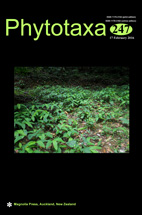Abstract
Haplophyllum is one of the taxonomically difficult genera in the Rutaceae. Three Turkish endemic species of Haplophyllum, namely Haplophyllum myrtifolium, H. vulcanicum and H. megalanthum, have similar morphological features, therefore identification of the species are extremely difficult. In the present study, morphological, anatomical and palynological characteristics of the species are examined in order to understand the usefulness of these characteristics for systematics purposes. Morphological characteristics of leaves and corollas, absence/or presence of glandular hairs on the stem and inflorescence, expansion form of filaments and ovarium appendage are useful for specific delimitation among the species. Anatomical characters such as number of cortex layers and sclerenchymatic cell layers in stem, size of the vascular bundle in the midrib provide information of taxonomical significance. In addition, exine sculpturing pattern of pollen grains can be used for taxonomic purposes.

